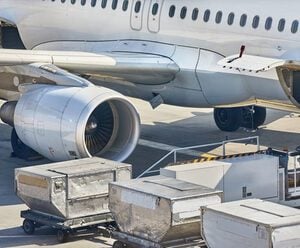
Full steam ahead for China and Ukraine: Finding opportunity in close links

Come summertime, millions of sunflowers in central Ukraine would unfurl into full bloom, turning the countryside into swathes of majestic yellow that stretch endlessly for miles.
These sunflowers — incidentally the Eastern European country’s national flower — are much more than just a mesmerizing sight. They are literally fields of gold.
As the world’s largest exporter of sunflower oil, Ukraine exported over six million tons of sunflower oil in 2019. About 76,400 tons of the product headed for China alone, which overtook Russia to become Ukraine’s largest bilateral trade partner that same year.
Like the flourishing sunflower fields, relations between the two countries have reached new heights in recent times. According to the State Statistic Service of Ukraine, the country’s exports to China surged 63.3 percent year on year in 2019, as Sino-Ukrainian trade turnover hit a massive US$12.8 billion (€10.7 billion).
“There is a lot of excitement for those watching trade developments between China and Ukraine. Despite the Covid-19 pandemic in 2020, this relationship has grown stronger and is only set to deepen, with efforts to boost connectivity between the two countries underway,” noted Steve Huang, CEO of DHL Global Forwarding Greater China.
A new Memorandum of Understanding (MOU) between DHL Global Forwarding, Ukrainian Railways, and the Center of Transport Service Liski (CTS Liski), the logistics division of Ukrainian Railways, aims to build better, more efficient rail links to support the growing partnership.
“Establishing a rail route to Ukraine would provide Asian businesses with strategic access to the Baltic States, Belarus, and the Nordic countries. This would also allow goods from neighboring countries to be consolidated in the capital before being sent on to China by rail. From there, they can then be dispatched to various Asian markets via air or road freight,” explained Huang.
This signals greater trade opportunities between Europe and Asia, putting global trade and cooperation back on track.
A blossoming friendship
The friendship between Ukraine and China goes back to 1992 when diplomatic relations were first established, but it was not until the mid-2010s that it turned the page.
In 2014, Russia’s annexation of Crimea severely strained its geopolitical and economic ties with Ukraine, causing trade between the two close partners to shrink 65 percent from 2013 to 2018.
China has offered to play the role of mediator, after President Xi Jinping labeled Ukraine as a friend and expressed his wish to further deepen cooperation between the two countries. “We genuinely hope that Ukraine maintains social stability and economic development, and are willing to play a constructive role in promoting a political resolution to the crisis,” he said.
At the same time, China has stepped in to fill the void economically, with its imports from Ukraine rising 20.9 percent in 2019. As one of the poorest countries in Europe, Ukraine relies heavily on China as its top agricultural importer, which consumed US$1.4 billion (€1.17 billion) worth of agricultural products in the first half of 2020.
The relationship goes both ways. For China, Ukraine is of geographical importance. Its strategic location at the crossroads of China’s Belt and Road Initiative (BRI), with access to the Black Sea and the Sea of Azov, means it holds much potential to become a link between Asia and Europe.
In 2017, Ukraine officially joined the BRI when the two nations signed a joint action plan that would see the development of the new Silk Roads. The agreement sought to open channels between China and countries from Central Asia, the Middle East, and all the way to Europe.
Viktor Kiktenko, President of Ukrainian Association of Sinologists, sees the BRI as a collaborative model aimed at promoting cooperation and benefits for participating countries. The initiative, he added, will also pave the way for other ideas that promote common development and prosperity globally.
A (rail)road to greater cooperation
While the Covid-19 pandemic has unraveled trade tensions among some countries, it has not derailed Ukraine’s ambitions for progress and greater foreign collaboration.
In fact, where China and Asia is concerned, Ukraine’s Foreign Minister Dmytro Kuleba believes it is “high time to shift to the higher gear” in mutual relations.
“When the global community recovers from the Covid-19 shock, we all need to reconsider how to cope with shortcomings and vulnerabilities that came to light so vividly because of the virus,” he said.
“Every nation is pondering how to ensure uninterrupted supplies, provide support to small and medium enterprises, and to help their people in finding jobs and developing businesses. Ukraine, like nations in Asia, is doing the same,” he added.
Private sector players are stepping up to expedite this shifting of gears. For instance, the recent agreement that DHL Global Forwarding signed with CTS Liski and Ukrainian Railways will tap the potential of the Ukrainian capital of Kiev to facilitate shipments between the Asian and European continents.
“I am convinced that this partnership to create rail connectivity will expand trade flows between businesses in Asia and Europe and, in turn, contribute toward the deepening of trade ties between the two countries,” said Huang.
When it comes to fruition, it would not only serve as a key bridge between European customers and Asian businesses, but also unlock inter-regional trade opportunities for Ukraine and its neighbors.
ALSO WORTH READING













 English
English